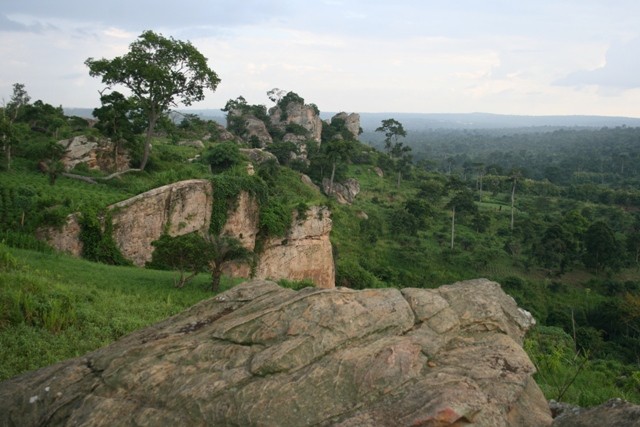Akatekyi Crocodile Pond: A Place...
September 29, 2025
The caves not only hold ecological significance but also play a crucial role in the cultural heritage of the local community in Buoyem.
The Village of Buoyem
Buoyem is a quaint village in a captivating canyon, surrounded by sandstone hills, lush forests, and mysterious caves. The warm and hospitable locals welcome visitors with open arms, offering a glimpse into the rich cultural tapestry of the region. The village is adorned with stunning views, breathtaking waterfalls, and scenic spots that lure adventurers seeking to immerse themselves in nature's beauty. Besides the allure of the caves, tourists can explore the iconic rock formations shaped like the African continent and an umbrella. The village also boasts Bibiri Falls and significant historical caves once relied upon by the Ashanti tribe during the 18th century. Buoyem offers a unique opportunity to witness traditional food preparation, vibrant local markets, and traditional ceremonies.
The Mprisi Sacred Grove
Encompassing approximately 350 hectares, the Mprisi Sacred Grove is a dry semi-deciduous forest that hosts a diverse array of flora and fauna. Tourists can embark on a fascinating journey that begins at a cave housing the secret source of an underground stream. The hike through this enchanting forest leads to two significant viewing points at the largest bat cave. The Mprisi Sacred Grove holds deep cultural and spiritual significance for the residents of Buoyem, and it is customary for traditionalists to pour libation in reverence to this sacred place.

Cave Exploration and Bat Expedition
The highlight of any visit to Buoyem is undoubtedly the Bat Tour, where bat enthusiasts and students can observe and study the captivating Rosetta Fruit Bats and their behaviour. The tour commences with a 45-minute car ride to the Mprisi forest, followed by a 30-minute hike to the observation areas at the largest bat cave. This unique experience offers insight into the bats' environment and interactions. The tour further proceeds to a second cave, requiring a hike through the forest and crossing two rivers. Visitors are introduced to the diversity of native plants and various animal species residing within this cave. The third cave houses bats of different species and sizes, and natural openings in the rocky surface above allow sunlight to illuminate the scene, providing a breathtaking sight of the bats in their natural habitat. A forest and rock formations lead the tourists to the main cave, where a traditional libation ceremony takes place, and visitors can engage in cultural exchanges with the locals. Tourists should wear a hat during the cave exploration to avoid contact with bat droppings.
Accommodation and Local Cuisine
Buoyem provides ample accommodation options, with a hotel nearby that caters to the needs of tourists. The well-maintained rooms come equipped with electricity, private bathrooms, and friendly staff ready to assist. The community offers access to underground water and minerals, but there are no restaurants nearby. Skilled local women prepare delightful dishes for tourists, and those who prefer to cook for themselves can find local meals and facilities readily available.
The Buoyem Bat Caves offer an enchanting experience that combines natural wonders, cultural immersion, and the awe-inspiring beauty of Ghana's Brong Ahafo region. From the bustling village life of Buoyem to the serene ambience of the Mprisi Sacred Grove, and the captivating Bat Tour, visitors are treated to an unforgettable journey through nature and heritage. As travellers embark on this adventure, they not only witness the marvels of the Rosetta Fruit Bat colony but also become part of the local community's deep-rooted traditions and warm hospitality. The Buoyem Bat Caves stand as a testament to the harmony between humans and nature, a rare gem waiting to be explored by curious souls from around the world.
September 29, 2025
September 29, 2025
September 26, 2025
September 18, 2025
September 18, 2025
September 4, 2025
September 3, 2025
August 28, 2025
August 19, 2025
August 8, 2025